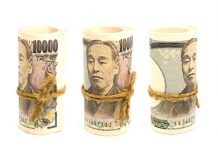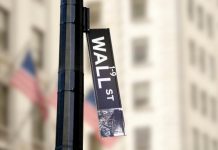Key insights from the week that was.
Australian data was mixed this week as conditions deteriorated offshore.
At July, the NAB business survey painted a sombre picture of both conditions and confidence in Australia. In the month, conditions fell 2pts to +2, a well below-average level. Confidence rose (+2pts to 4), but remained below average. While confidence has improved in retail and in finance, property & business following the tax cuts and as sentiment towards housing turns, elsewhere confidence is lower than at the start of the year. As alluded to by the conditions outcome, the activity detail of the survey was weak in July, with: trading conditions down 1pt; profitability squeezed; and the employment index down 5pts to 0, a level consistent with employment growth decelerating below population growth over the coming six months – the consequence of which would be a rising unemployment rate.
That signal for the future notwithstanding, employment growth remained strong in July, a 41k gain in the month leaving annual growth at 2.6%yr. However, a rise in the participation rate to a new all-time high kept the unemployment rate unchanged at 5.2% and, despite the majority of the jobs being full-time positions, underemployment also remained near its recent peak of 8.6% at 8.4%. The persistent slack evident in unemployment (versus the RBA’s full-employment estimate of 4.5%) and underemployment as well as the ongoing rise in new supply into the labour market (rising participation) highlight why wages growth remains weak.
On that front, while the headline wage price index beat expectations in the June quarter, rising 0.6% and 2.3%yr, the upside surprise was solely due to the largest quarterly rise in public sector wages (0.8%) since March quarter 2014, which in turn was the result of a surge in public wages in Victoria (1.5%) centred on some large increases in the health care and social assistance industry. National private sector wages meanwhile rose by just 0.54% in the June quarter, leaving annual growth at a decidedly sub-par 2.3%yr and 6-month annualised growth weaker still near 2.0%. Note it remains the case that, with the exception of Victoria, wages growth is underperforming underutilisation (unemployment and underemployment combined), implying additional headwinds such as globalisation and the search for efficiency are also weighing on wages growth.
It is perhaps not surprising then that, while headline Westpac–MI consumer sentiment bounced back to a neutral level in August (despite considerable global instability), views on family finances remain below average. And further that, though ‘time to buy a major household item’ is at its highest level in a year, it is also still below average.
In August, an additional question run every six months highlighted that expectations around interest rates are the most dovish they have been since mid-2012, when the RBA delivered a significant easing cycle. On the back of these expectations and the turning up of price momentum in Sydney and Melbourne,
‘time to buy a dwelling’ rose a further 3.0% in the month to be comfortably above average, and house price expectations are now on par with the levels of mid-2018 – albeit still some 18% below March 2017’s peak.
As highlighted by RBA Deputy Governor Debelle in a speech this week, considerable risk for Australia looms offshore. Evidence of this fact was also clearly seen in data from China and Europe, and associated market developments.
On the data, July China outcomes disappointed on all fronts, with fixed asset investment, industrial production and retail sales all coming in below expectations. The biggest concern remains investment, with strong sectors such as real estate decelerating as growth fails to pick up elsewhere. Indeed, from the investment detail and the credit data, it seems that private sector business investment has deteriorated further. A joint production by Westpac Economics and Strategy, our latest China in 2019 update takes an in-depth assessment of the implications of recent trade escalations and the outlook for the economy and policy.
In the Euro Area, the soft pace of growth in the June quarter was confirmed at 0.2%qtr, 1.1%yr. New detail shows a further deterioration in manufacturing, industrial production down 0.6%qtr in Q2. In accordance, the German economy contracted 0.1%qtr due to slumping exports.
Ahead of the release, German Chancellor Merkel indicated she didn’t see the need for a fiscal stimulus package “so far” but was monitoring Q2 German data and would “react depending on the situation”. With Q3 shaping up no better — the ZEW survey dropped to a 2011 low in August — we can only hope the print is bad enough to elicit a fiscal response. If not, the burden will remain with monetary policy. On that front, last night, ECB member Rehn suggested an “impactful and significant” stimulus package is coming in September.
Highlighting the unease of market participants stemming from global developments, the US 10yr yield fell as low as 1.47% this week (15bps above the all-time low) and the 2–10yr spread briefly inverted for the first time in this cycle. This is despite robust CPI and retail sales outcomes for July. Further, ahead of the 2019 Jackson Hole Symposium late next week, the terminal rate expectation of the market for the federal funds rate has slipped below 1.00%.














